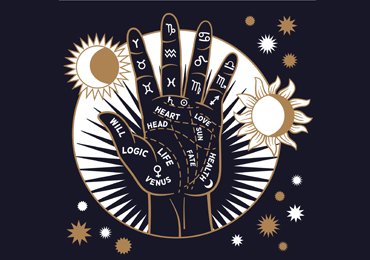Science of Hinduism and Western Scholars:-
The word Hinduism represents religion and philosophy, which originated in India. It is one of those religions that constitute 16% of the world’s population, where India has proven to be home to more than 90% of the world’s Hindus. By now, many historians and philosophers of science have started reviewing the dynamic events and historical processes that led to the European Enlightenment and modern science. You will be reading ahead about how Hinduism as a religion has coexisted with scientific pursuits, the underpinnings of such partnerships, and the significant contribution towards the current engagements between science and spirituality. As Hinduism is an idol-centric religion, its core principles have no consequence to science. Where Hindutva is a word that intensifies the emotions of many in the country. This term was coined by Vinayak Damodar Savarkar, an ‘atheist’, in the year 1929 and was aimed at forming a ‘Hindu Rashtra.’
Hinduism from Swami Vivekananda’s point of view:-
When we talk about Hinduism, it’s actually hard to describe its meaning and yet it had been beautifully described by the famous Hindu monk, whom we knew as Swami Vivekananda. He was surely not an ordinary monk rather was a graduate of philosophy and was a very intense thinker. Additionally, he was part of the Brahmo Samaj and his intense desire to know God was paralleled by his intense compassion for his country. He believed that the people and their mindset had devalued. That’s when he went on as a wandering monk who travelled the length and breadth of the country examining the people from the year 1888 to the year 1893. Where he meditated for 3 days and 3 nights in Kanyakumari. His objective was to meditate and study/understand the past, present and future of India.
In this process, he made friends with kings and commoners alike and observed pain/sensitivity towards poverty, illiteracy, lack of hope where many people lived.
Thereafter which, he took it upon himself to motivated the youth of the country to work for the betterment of a lot of ordinary Indians. His endeavours didn’t just limit to India yet even from abroad i.e. the USA and Europe, where he constantly enjoined upon his brother monks to work towards education and the material upliftment of the common masses of the country, especially for those present in the villages. To him, this was the key duty of those dedicated to Hinduism, which included the mere observance of fasts, worship and meditation. As the rituals of religiosity were of no value to him if this noble human duty was disregarded.
The number of studies and issues that he touched upon still stand relevant in the present times. Indeed this spiritual leader and patriot Swami Vivekananda, who had been projected as the pioneer saint of the ideology of Hindu supremacy highlighted that how unjust and erroneous our legacy is. What distinguished Swami Vivekananda from many other religious-spiritual leaders of the world was his emphasis on service to humanity as a means both of human fulfilment and upliftment of the soul. The passion with which he followed this, took him from pure spirituality to a throbbing empathy for the suffering, masses striked from the poverty of colonial India, lead him to ultimately establish the foundation of the ‘Ramakrishna Mission’ in the year 1897. This Mission, you must be knowing, is still among the foremost organisations in the country engaged in genuine humanitarian work.
Science behind Hinduism:-
Hindu dharma is considered scientific as, it is based upon what can be known, intuited and experienced. Additionally, the Rig Veda states that the earth is round, goes around the sun, etc. Yoga is a verified science, and whoever denies it, should first understand it before merely calling it a pseudoscience. It is not even religious in nature or even from the standpoint of its definition. There are some scientific proofs that Hindus follow day in day out and it portrays Hinduism to be very scientific in nature. Read on to know about them
Wearing a toe ring:-
It doesn’t just signify that a woman is married yet the toe ring presses a particular nerve from the second toe which connects to the uterus and passes to the heart.
Also, it helps in regulating the blood flow while regularizing the menstrual cycle.
Mostly silver material toe rings are preferred as it absorbs polar energies from the earth and passes it on to the body.
Throwing coins in a river:-
People perceive this act to be a sign of good luck however like the above point, this too holds a scientific logic. Going back to ancient times, the currency which we possessed was mostly made up of copper, unlike stainless steel that we have today.
So, since copper is an essential metal useful for the human body, hence, throwing it in the river made that water good for consumption. As back then rivers were the mere source of drinking water.
Greeting Namaskar joining both the palms:-
We mostly perceive this gesture as a mark of respect however deep-diving into the science behind it, will amaze you. When one joins both hands together it presses the pressure points of eyes, ears and mind. And it is even said that when you do it for the other person then it helps in remembering him/her for a long time.
Applying tika/tilak/kumkum on the forehead:-
It’s something that has a quintessential place in the Hindu dharma. Where Tilak is believed to prevent loss of energy and red kumkum helps to retain it along with the control of varying concentration levels.
Charan Sparsh/touching feet:-
This gesture is regarded as a form of paying respect to the elderly or to anyone whom you consider senior (shraddha). How it works scientifically? When the person whom’s feet you touch signifies that they have accepted your respect shown towards them. They in return emit positive thoughts and energy which is called karuna. In a nutshell, it refers to the completion of the circuit that enables the flow of energy and increase of cosmic energy as this connects two minds and hearts.
Worshipping Tulsi:-
Tulsi aka holy basil is one such element, which predominately acquires an important space in everyone’s angan/house premises at a prominent place. As Tulsi plant is personified as a Goddess, where it is also known for its medicinal properties. People even consume it in their daily tea intake which is said to boost immunity and prevent various diseases. Keeping it at home also helps in eradicating insects, mosquitoes, and even snakes.
The ritual of visiting a temple:-
Temples are always placed strategically, where the location possesses positive energy in abundance. This is available through magnetic and electric wave distributions of the north/south pole thrust. The core centre of the temple is known as garbhagriha/moolasthanam. Therefore, the person who pays often visits the temple and walking clockwise is believed to attain magnetic waves from the main idol. This makes the individual more filled with positive energy in maintaining a healthy life.
Sitting on the floor while eating:-
You must have witnessed this tradition that our ancestors followed religiously without fail. And especially while eating food, which is also known as sukhasan. This posture i.e. the sukhasan or the half padmasana is said to bring a sense of calmness in the person. Not just this yet it also boosts the digestion process.
Applying Mehendi/Henna on the hand/feet:-
It’s sure that this act is related to mostly the woman getting married or on any of the auspicious festivals as per the Hindu dharma. So yes it is related to those rituals itself, especially the wedding day. Reason being that the wedding day is a hectic one along with the mix of anxiousness/nervousness. Hence, mehndi helps in warding off stress and instead cools the body and calms the nerves thereby bidding goodbye to tension.
Presence of bells in the temple:-
According to Agama Sastra, the bell’s sound helps in warding off evil forces and is also considered pleasant to the god. Going ahead to understand the scientific principle is that the bell’s ring clears our mind and aids in staying alert/sharp and give our full concentration in the divine practice. As the bell produces a sound that creates a unity of the left and right parts of the brain. Also, it activates all the 7 seven healing centres present in our body thereby getting rid of all negative thoughts.
This article concludes that Hinduism is based on attached with scientific roots, where each action denotes some positive significance. Especially the examples stated above helps in clearly understanding the same. It for the wellbeing of people around and considering them as a priority before anything else. Hinduism has established a beautiful theory that is known as “The manifested universe, which is
“becoming” from the “unmanifest.”
Suggested Blogs

Science Of Hinduism And Western Scholars
The world Hinduism represents religion and philosophy,which originated in India.it is one of those religions that constitute 16% of the world’s…..

The Significance Of Four"Divine Nights"
Astrology is referred to as a divine science, which depends upon constellations, sun signs and the position of the plants…

Karma Kanda & The Essential Forms Of Puja
In the Vendas,there are 3 types of kandas viz. Karma kanda,jnana kanda and upasana kanda.Out of which,todaywe are going to discus…
